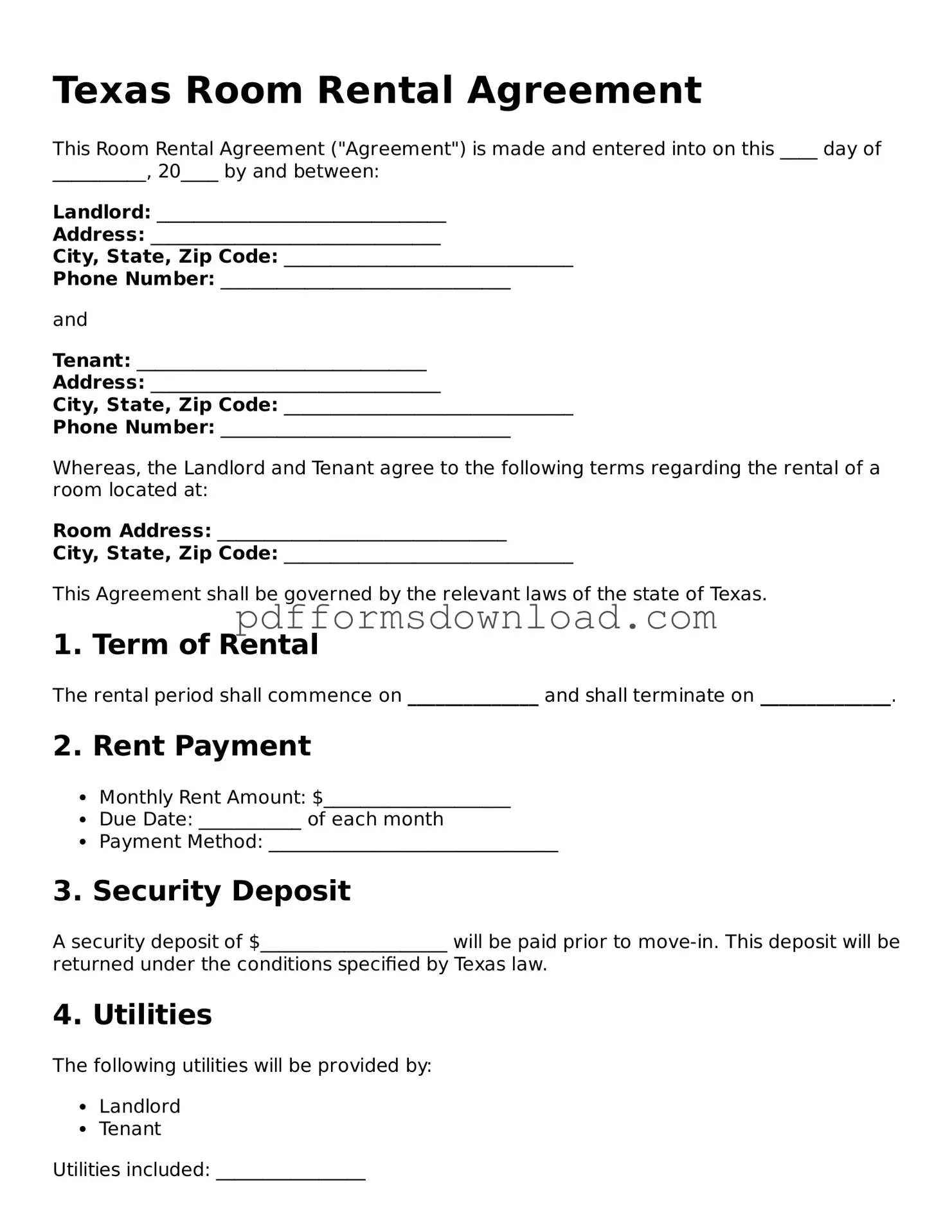What is a Texas Room Rental Agreement?
A Texas Room Rental Agreement is a legal document used between a landlord and a tenant. It outlines the terms and conditions of renting a room in a property. This agreement helps protect both parties by clearly stating the rights and responsibilities involved in the rental arrangement.
What should be included in the agreement?
The agreement typically includes essential details such as the names of the landlord and tenant, the address of the rental property, the rental amount, payment due dates, and the duration of the rental period. Additionally, it may cover rules regarding maintenance, utilities, security deposits, and termination conditions.
Is a Texas Room Rental Agreement required by law?
How can I modify the agreement?
If both parties agree to changes, the agreement can be modified. It’s best to write down any changes and have both the landlord and tenant sign the new document. This ensures that everyone is on the same page and reduces the chances of confusion later.
What happens if the agreement is violated?
If either party violates the terms of the agreement, the other party may take action based on the terms outlined in the document. This could include seeking damages or terminating the agreement. It's important to review the agreement to understand the specific consequences of any violations.
